AUGUST 31, 2024: Today was our day to explore Zaragoza. Zaragoza is a large city with a population of 600,000, making it the 5th largest city in Spain. It sits on the banks of the Ebro river. We spent the day doing general sightseeing while also searching for Jewish Heritage sites here.
As a large, modern city, there are very few remnants of the Jewish community that once thrived here. I’ve noticed that, in general, larger cities that have undergone significant urban renewal tend to have fewer visible traces of their historic Jewish neighborhoods. In contrast, smaller medieval towns like Híjar, which have preserved many of their old buildings, are far more likely to retain remnants of their Jewish past. Some of the items we searched for today in Zaragoza have a far-fetched connection to Jewish Heritage, but when you don’t have much, even far-fetched seems good.
We started our morning walk at the Central Market, right next to our apartment. This is a large covered market full of stalls. As we walked through the market, it seemed that the majority of the stalls were butchers. As you often see in Spain, many pig legs hung on the walls. Locals stood in long lines to purchase meat. Not for us. In the center of the market were a few prepared food vendors. Only towards the end of the market did we see what we were looking for – a few fruit and vegetable stalls.
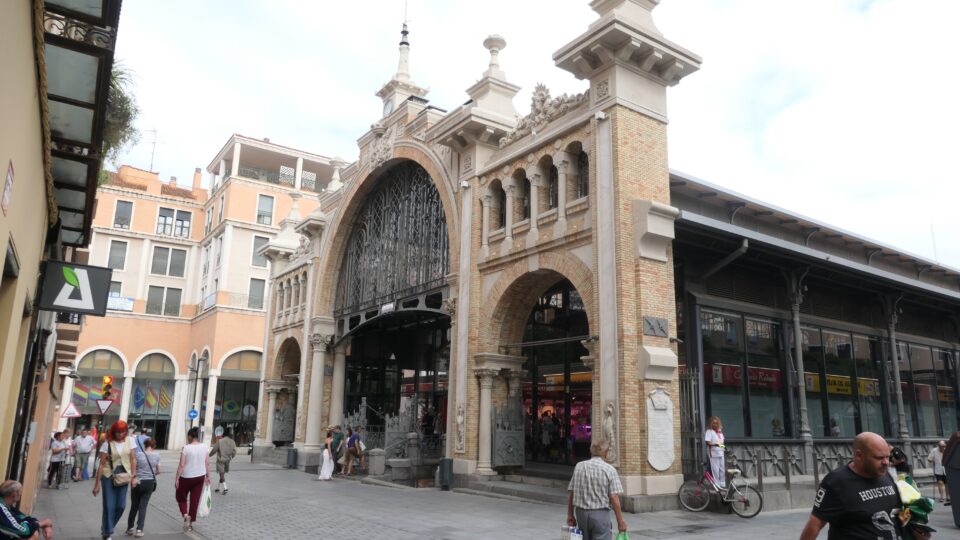
We exited the market on the north side and found ourselves facing the remains of a Roman wall. Built around 2,000 years ago, this is a small remnant of the once-mighty wall that surrounded the city Zaragoza, then known as Caesaraugusta. Originally, the wall stretched three kilometers and was fortified with 120 towers.
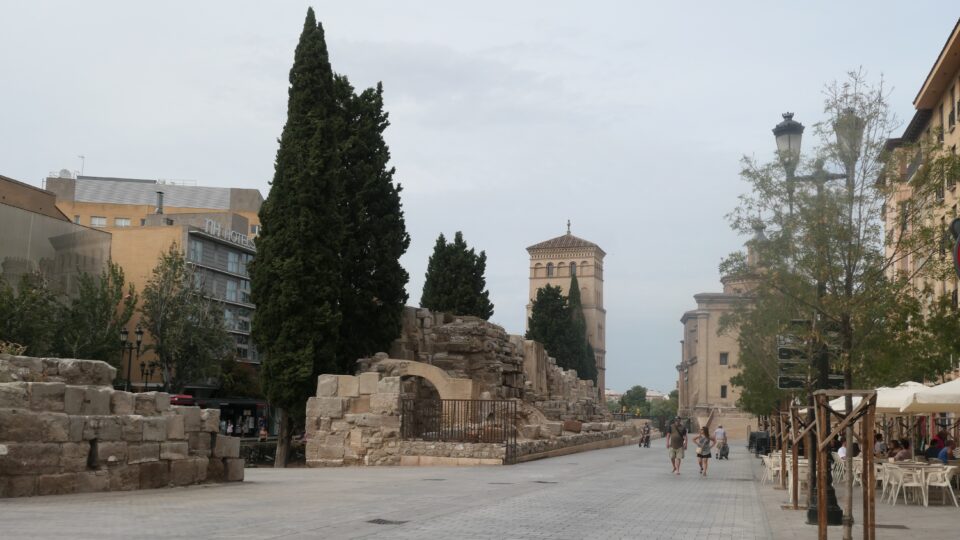
At few steps further, we reached the Plaza de Nuestra Señora del Pilar or in short Plaza del Pilar. This is the huge, main plaza of Zaragoza. On this plaza stands not one, but two cathedrals.
What is the difference between a cathedral and a church? A cathedral is a type of church that serves as the seat of a bishop, making it the central church of the region. Most cities with a cathedral typically have only one, and the bishop resides and serves there. There are only four cities in Spain with two cathedrals, and they usually consist of an Old Cathedral and a New Cathedral. When their original cathedral was considered too small or too plain, a new, larger, grander Cathedral was built, replacing the old one, which then fell out of use. What makes Zaragoza unique, is that both cathedrals are still in use. On April 1 of each year, the bishop ceremonially moves from one cathedral to the other.
At the far end of Plaza del Pilar is the Cathedral of the Savior (La Seo), the older cathedral. Along the north side of the plaza is the huge Basílica del Pilar, the new cathedral. Inside this new cathedral is the first far-fetched Jewish site that we wanted to find.
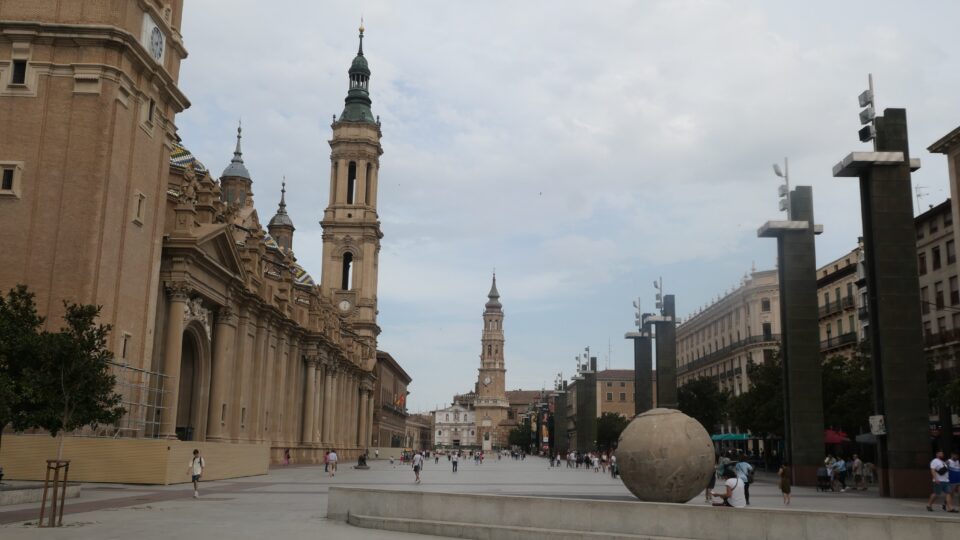
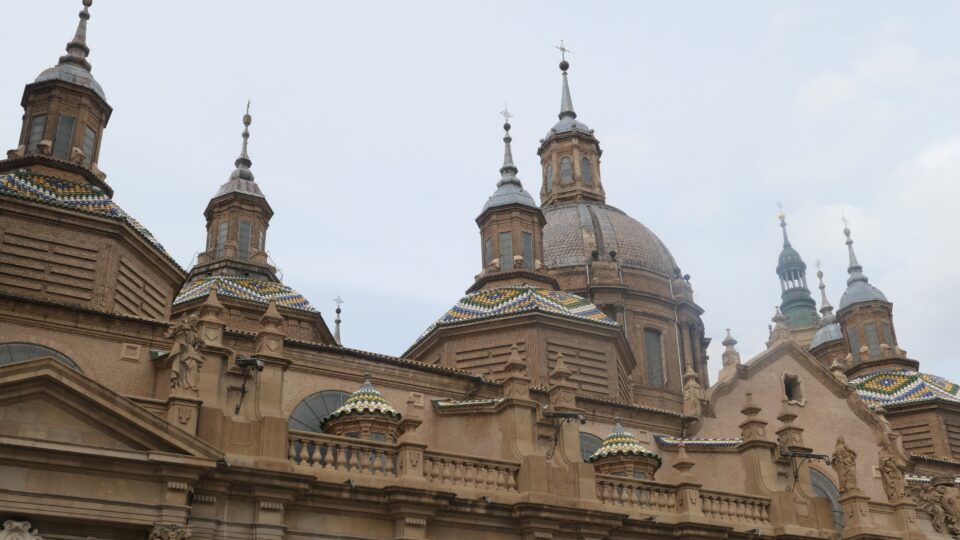
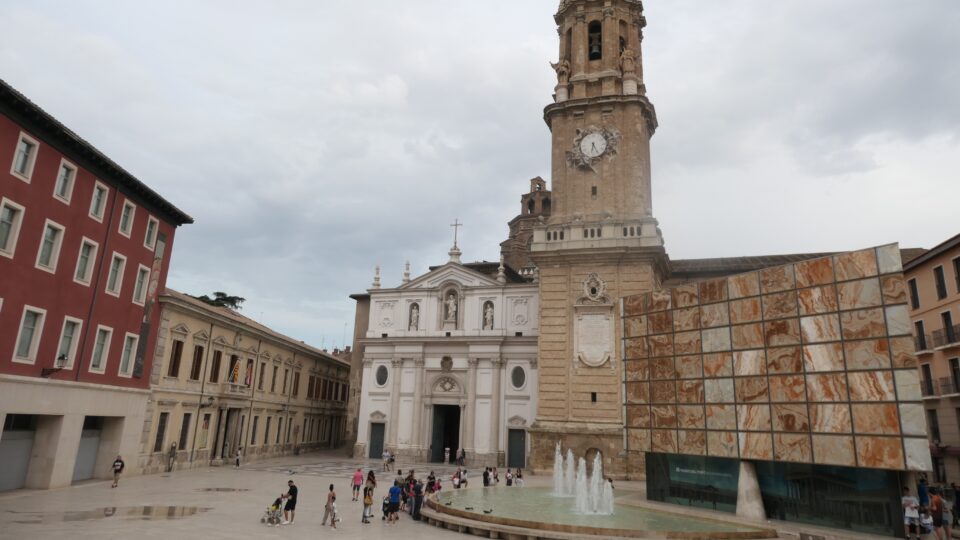
According to our research, on one of the altar pieces in the Basílica del Pilar is a statue of a rabbi. (Far-fetched, right?) I entered the cathedral to find this statue. The huge cathedral was full of people, some tourists just looking around, but also many others participating in one of the several masses taking place. After searching through many of the nooks and crannies of this huge interior, I did not find the rabbi. I asked one of the guards, and he knew right away where the statue I was looking for was. It was in a section of the cathedral that was now closed to the public, and would only open at 20:00 in the evening. I would need to return later on today.
We then walked behind the cathedral to the river. An old arched Roman bridge crosses the water. The iconic view of Zaragoza is a picture of the bridge over the river Ebro and the Basílica del Pilar in the background.
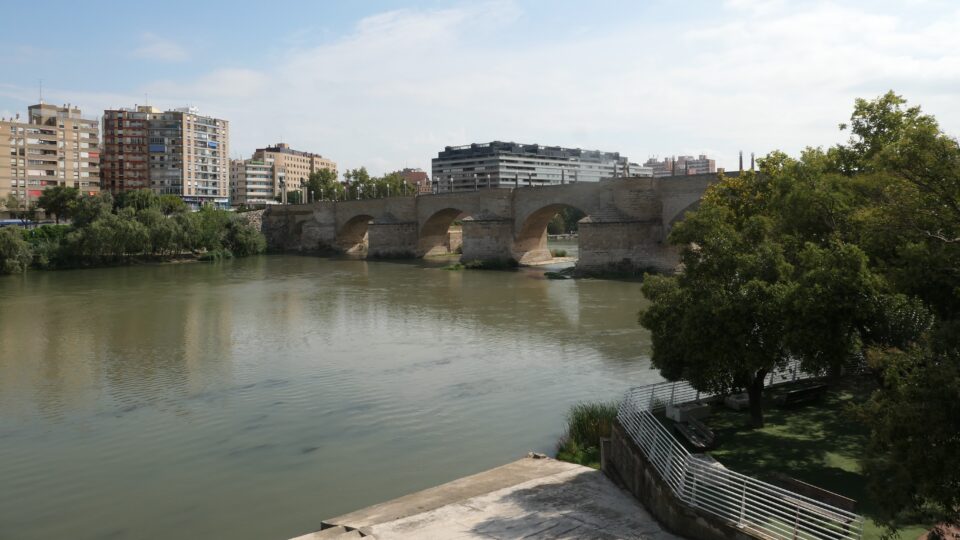
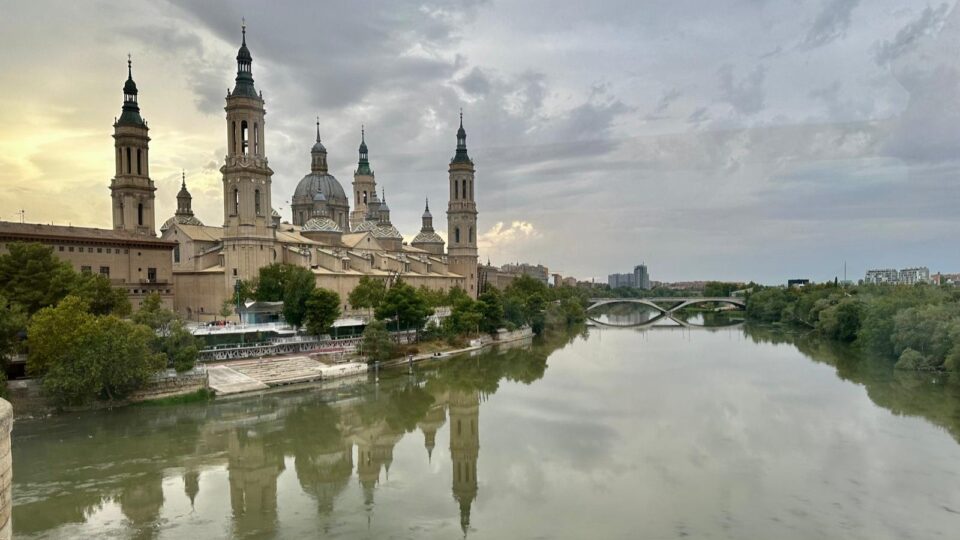
From the river, we made our way back to the large plaza, where we walked to the older cathedral, the Cathedral of the Savior, commonly known as La Seo. Its northern exterior wall is a striking example of the Mudéjar style, an architectural tradition unique to Spain that reflects the interplay of Christian, Muslim, and Jewish influences. What makes Spain distinct from other regions where Jews lived is this unique cultural dynamic: in Europe, Jews were a small minority in a Christian-majority society, while in North Africa, they lived among a Muslim majority. However, in the late medieval period in Spain, Jews coexisted with both Christians and Muslims.
The Mudéjar style, as seen in Zaragoza, took inspiration from these three cultures that lived together here. If you look closely at La Seo’s wall, you can spot Stars of David incorporated into the design. While this connection to Jewish heritage may seem far-fetched, it’s a fascinating reminder of the shared history of the three cultures that once thrived side-by-side here.
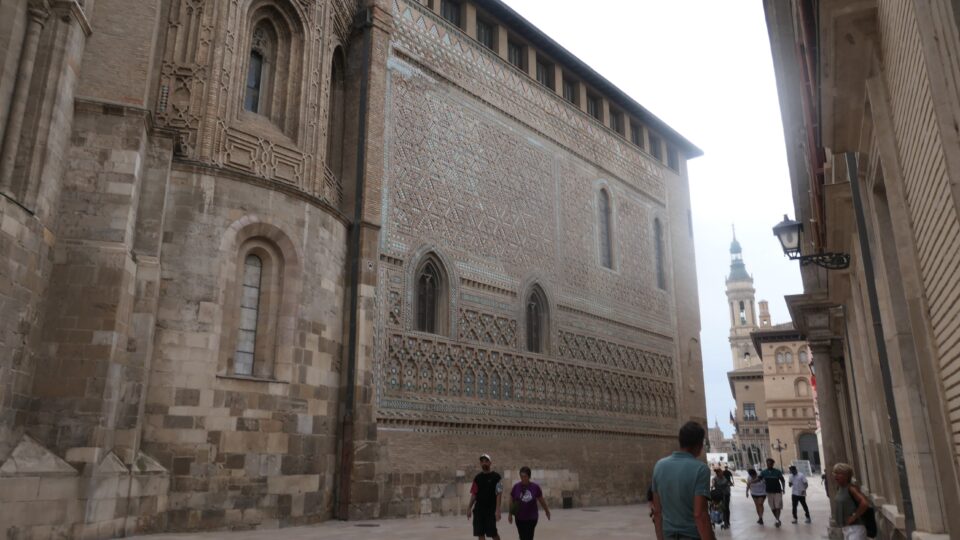
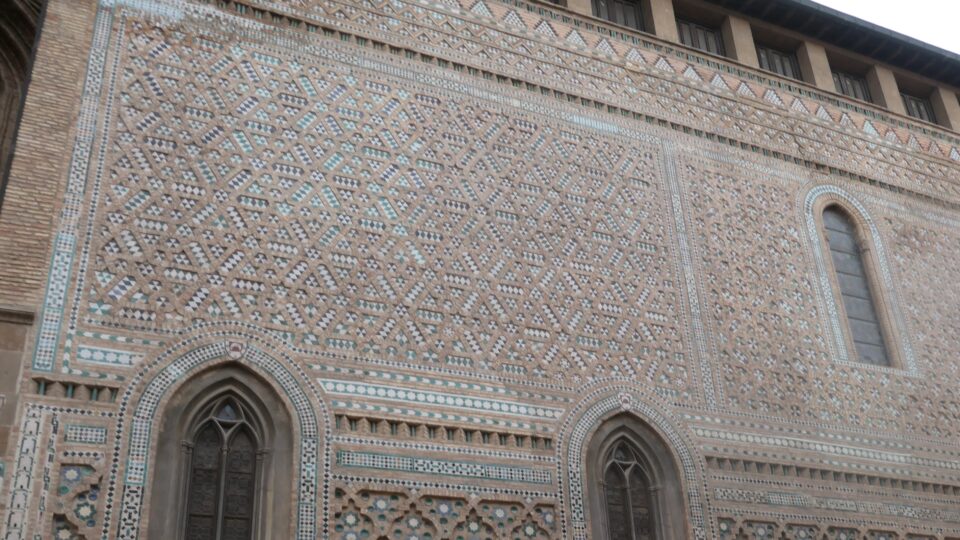
We then strolled through the streets of the old city to the Jewish quarter. Some of the streets were small, narrow pedestrian lanes while others were wide roads with traffic. Our first destination was the location of the former main synagogue.
At its peak, during the 13th century, Zaragoza had multiple synagogues. Six different ones are mentioned in historical records. While some estimates suggest up to 5,000 Jewish families lived here during this period, scholars consider this figure to be exaggerated. In any case, it can be said that Zaragoza had a significant and influential Jewish community throughout the medieval period.
Upon reaching the location of the former synagogue, in Plaza San Carlos, a sign identifies the area as belonging to the previous Jewish quarter. Zaragoza was an aljama, a Jewish community with its own legal and fiscal regime, which included a prison, a hospital, a slaughterhouse and several synagogues. After the expulsion of the Jews in 1492, the main synagogue was demolished. The Royal Seminar of San Carlos Borromeo stands today on the site where the main synagogue of Zaragoza once was.
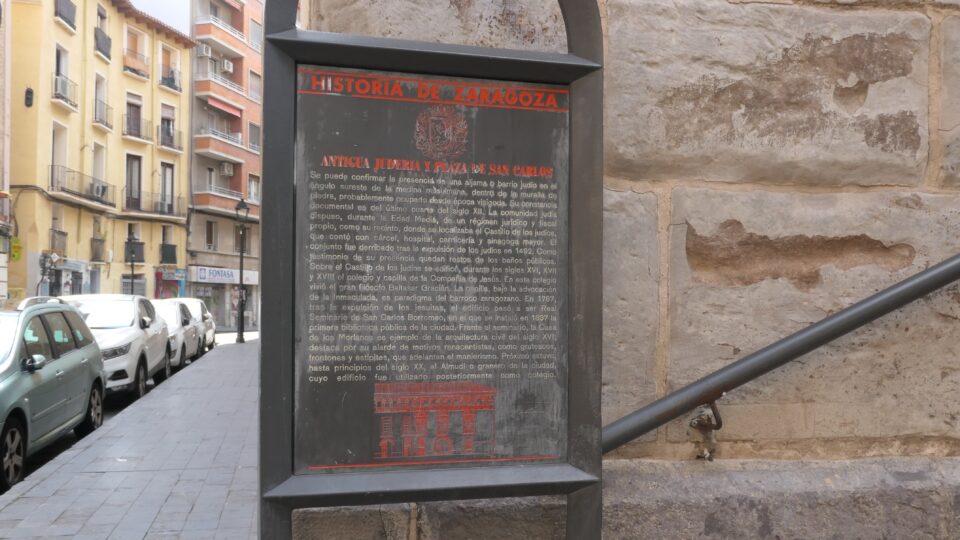
Across the small plaza is the Casa de los Morlanes (the Morlanes Palace), constructed in the early 16th century after the expulsion of Jews from Spain. The building features ten stone-carved tympanums (the semi-circular or triangular space above the windows) depicting biblical scenes. It is thought that a wealthy converso, nostalgic for Judaism, commissioned these decorations to honor the Jews who once lived in the area and to preserve their memory.
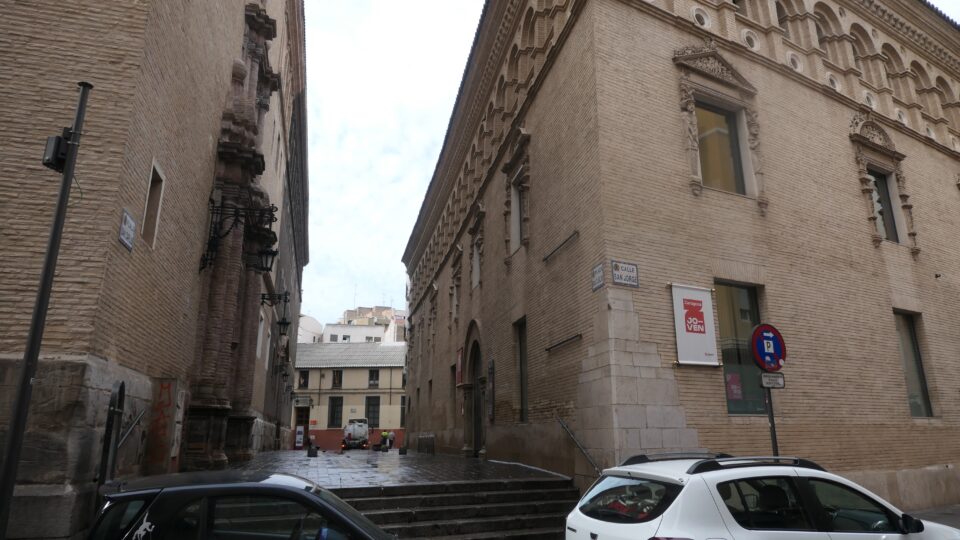
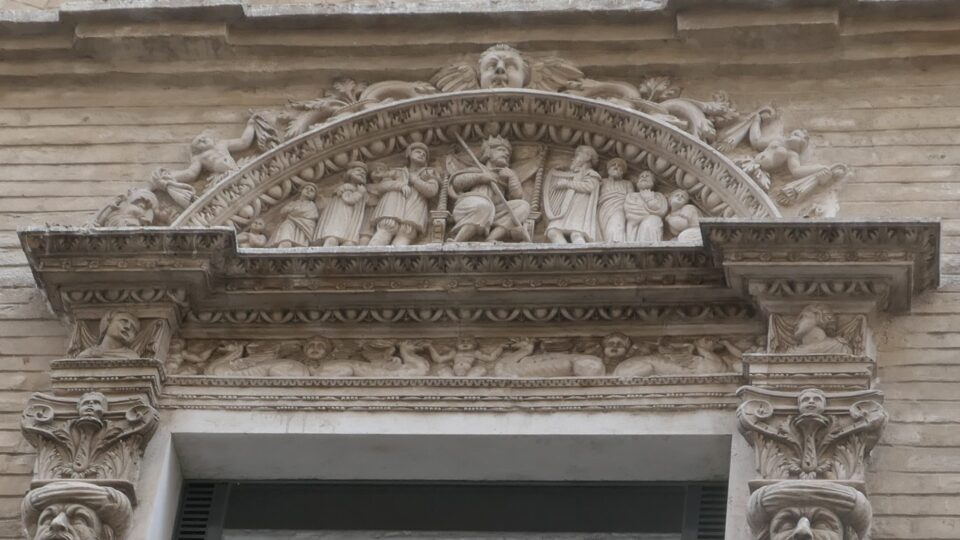
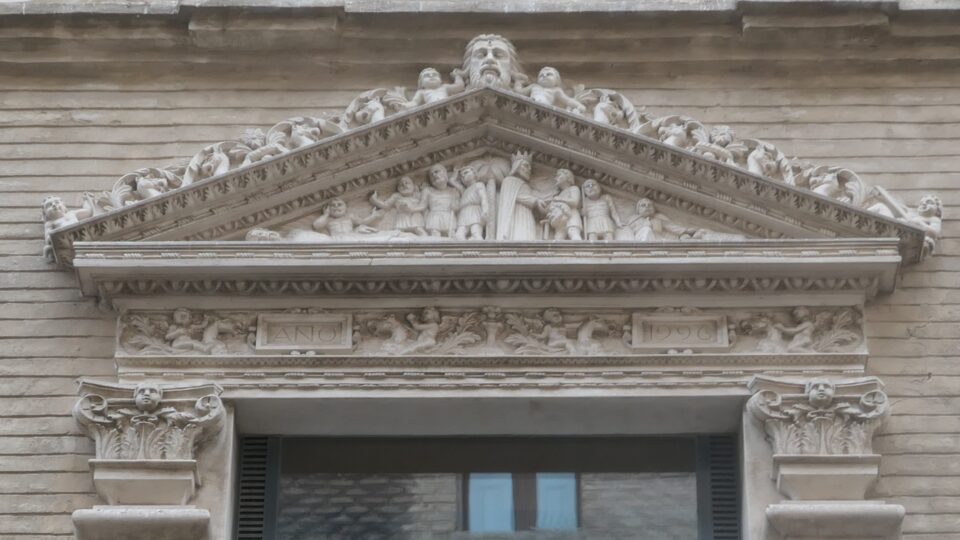
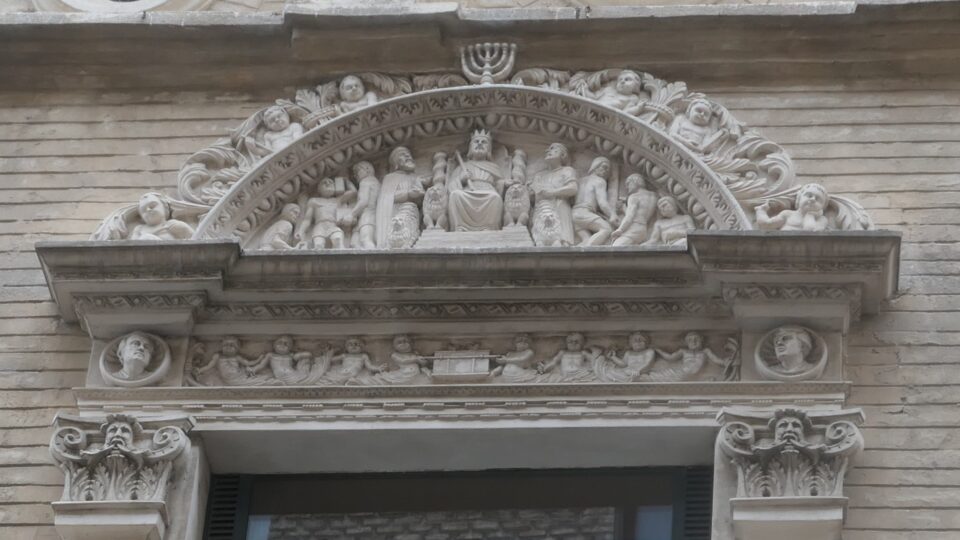
The former main synagogue was in the area of the old Jewish quarter. As the Jewish population grew, a new Jewish quarter was built, which we will explore further tomorrow. For now, we returned to the apartment for our Shabbat rest.
In the late afternoon, I ventured out again with my kids. We took the Hop-On Hop-Off bus tour and got a good overview of the whole city. The complete loop takes only about an hour – the city is not so big. Seating on the top of the open double-decker bus, we appreciated the breeze. Zaragoza is full of beautiful architecture, lush green parks, impressive wide boulevards and is pleasantly clean. Truly a hidden gem.
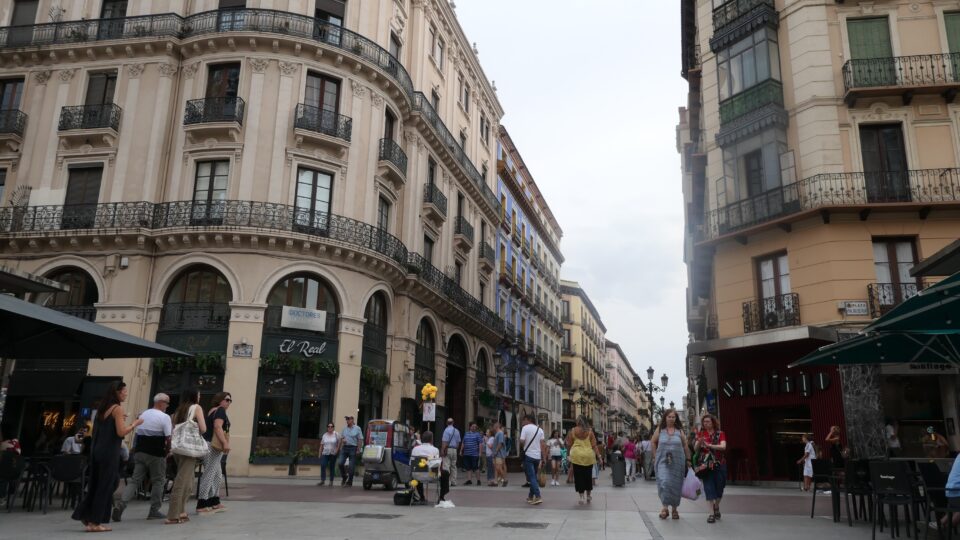
On the way back to the apartment, we returned to the large Basílica del Pilar cathedral. The area with the statue was now open and we easily located the rabbi. He is located on the bottom left corner of the Catholic altarpiece. Opposite him, on the bottom right corner is a Muslim man – another example of the co-existence of the three religions here.
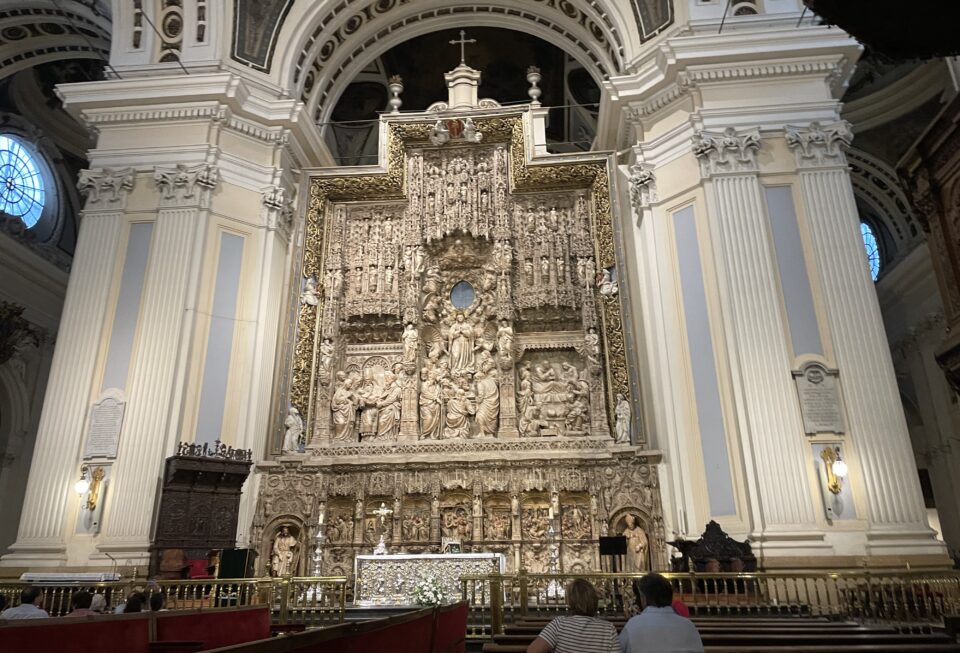
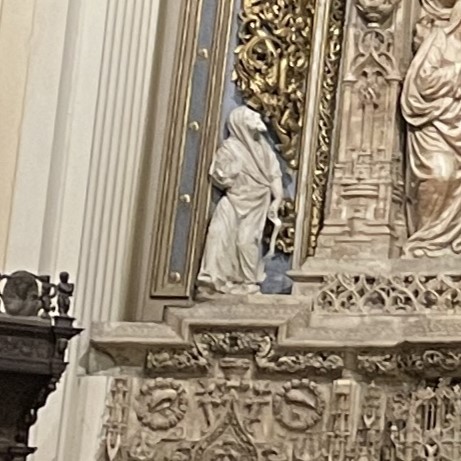
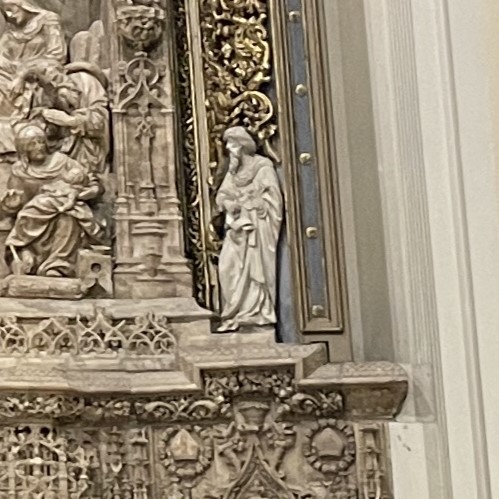
It was now getting late and we returned to the apartment. The kids went out again in the evening, but for me it was enough. Late at night, the streets here are full of people and very lively. Restaurants typically only start serving dinner after 21:00 and we hear people outside until the early hours of the morning. Spanish life is the exact opposite of my biological clock that prefers going to bed and waking up early.
One last item that I would like to mention about Zaragoza, is that some of you might have heard of Zaragoza because of the Zaragoza Megillah (Megillat Saragossa). There is a 17th-century Jewish text that tells the story of a miraculous event in which the Jewish community of Zaragoza narrowly escaped destruction. This led the community to have a yearly “Second Purim” celebration on the 17th of Shevat. Interestingly, a copy of the Megillah today can be found at Columbia University (my alma mater) in the Rare Book & Manuscript Library.
Enough for one day. Tomorrow morning, the kids drive back to Barcelona and fly home. Mark and I will continue our journey to discover more Jewish Heritage sites in northern Spain. Some will be far-fetched and most, hopefully, less so.
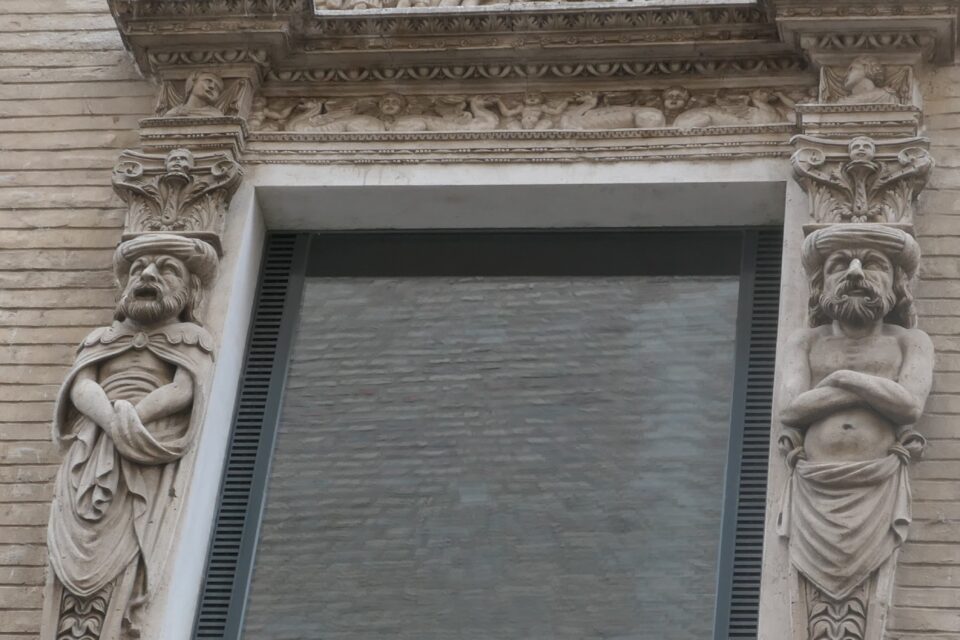
Looks beautiful!